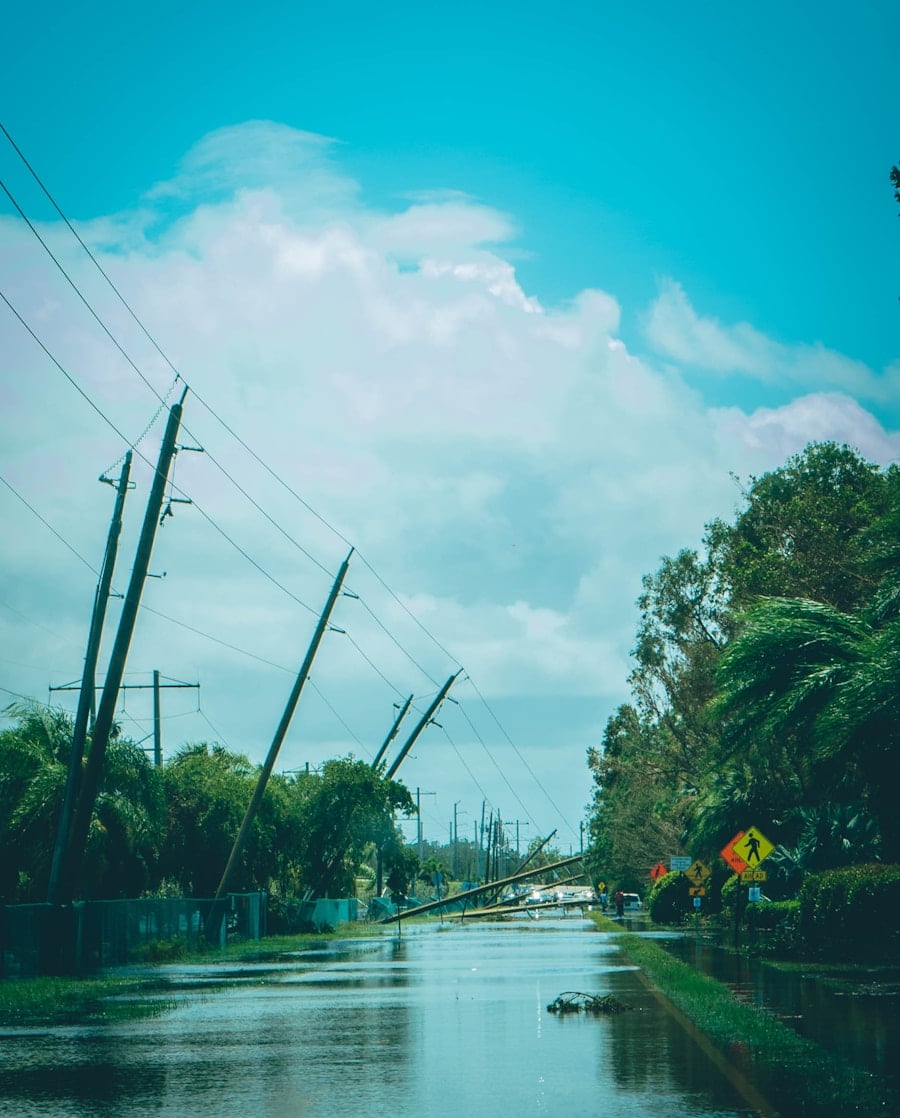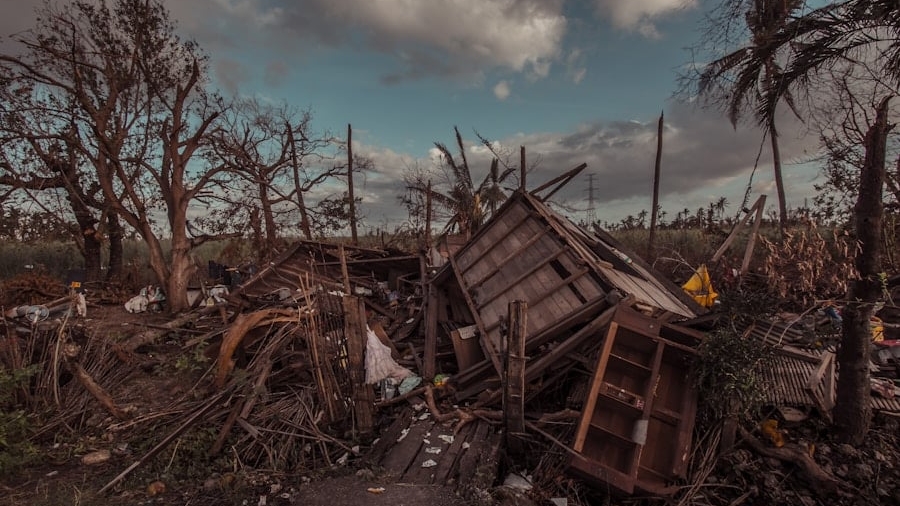In recent years, the intersection of artificial intelligence (AI) and environmental analytics has emerged as a transformative force in understanding and managing ecological systems. AI-powered environmental analytics leverages vast amounts of data collected from various sources, including satellite imagery, sensor networks, and social media, to provide insights that were previously unattainable. This technology enables researchers, policymakers, and disaster response teams to analyze complex environmental patterns and trends, facilitating informed decision-making in the face of climate change and natural disasters.
The integration of AI into environmental analytics not only enhances our understanding of ecological dynamics but also equips us with the tools necessary to mitigate the impacts of disasters. The significance of AI in this domain cannot be overstated. Traditional methods of environmental analysis often rely on manual data collection and interpretation, which can be time-consuming and prone to human error.
In contrast, AI algorithms can process and analyze large datasets at unprecedented speeds, identifying correlations and anomalies that might go unnoticed by human analysts. This capability is particularly crucial in disaster recovery efforts, where timely and accurate information can mean the difference between life and death. As we delve deeper into the role of AI in disaster recovery, it becomes evident that its applications extend far beyond mere data analysis; they encompass predictive modeling, real-time monitoring, and strategic planning.
Key Takeaways
- AI-powered environmental analytics can revolutionize disaster recovery efforts by providing valuable insights and predictions.
- AI plays a crucial role in disaster recovery efforts by analyzing environmental data to predict and prepare for disasters.
- Environmental analytics can be used to predict and prepare for disasters, improving response and recovery efforts.
- AI-powered environmental data can significantly improve response and recovery efforts in disaster situations.
- Successful case studies demonstrate the effective implementation of AI in disaster recovery, showcasing its potential impact on environmental management.
The Role of AI in Disaster Recovery Efforts
Enhancing Situational Awareness
During a disaster, the ability to quickly assess the situation is critical for effective response. AI systems can analyze data from various sources, such as weather forecasts, social media posts, and satellite imagery, to provide real-time insights into the extent of damage and the needs of affected populations.
Identifying Areas of Need
Machine learning algorithms can process images from drones or satellites to identify areas that have been severely impacted by floods or wildfires, allowing emergency responders to prioritize their efforts accordingly. This enables responders to focus on the most critical areas, ensuring that resources are deployed where they are most needed.
Facilitating Coordination and Response
AI can facilitate communication between different agencies involved in disaster recovery. By integrating data from multiple sources, AI systems can create a comprehensive picture of the situation on the ground. This holistic view enables agencies to coordinate their responses more effectively, ensuring that resources are deployed where they are most needed. For example, during Hurricane Harvey in 2017, AI-driven platforms were used to analyze social media data to identify areas where residents were stranded or in need of assistance.
Using Environmental Analytics to Predict and Prepare for Disasters

The predictive capabilities of AI-powered environmental analytics are revolutionizing how we prepare for disasters. By analyzing historical data alongside real-time environmental conditions, AI models can forecast potential disasters with remarkable accuracy. For instance, machine learning algorithms can analyze patterns in weather data to predict the likelihood of severe storms or flooding events.
This predictive power allows communities to implement proactive measures, such as evacuation plans or infrastructure improvements, before a disaster strikes. In addition to forecasting natural disasters, AI can also assess vulnerabilities within communities. By analyzing demographic data, infrastructure resilience, and historical disaster impacts, AI systems can identify which areas are most at risk.
This information is crucial for local governments and emergency management agencies as they develop disaster preparedness plans tailored to their specific needs. For example, cities prone to earthquakes can use AI analytics to evaluate building codes and retrofitting strategies that enhance structural resilience. By investing in these preventative measures based on data-driven insights, communities can significantly reduce the potential impact of future disasters.
Improving Response and Recovery with AI-Powered Environmental Data
The integration of AI-powered environmental data into disaster response strategies enhances both the speed and effectiveness of recovery efforts.
AI systems can analyze satellite imagery and aerial surveys to assess damage levels across affected regions quickly.
This rapid assessment allows emergency responders to allocate resources more efficiently and target areas that require immediate attention. Furthermore, AI can optimize logistics during recovery operations. By analyzing traffic patterns, road conditions, and resource availability, AI algorithms can suggest optimal routes for delivering aid or evacuating residents.
For instance, during the aftermath of a hurricane, AI-driven logistics platforms can help organizations like the Red Cross determine the best way to distribute food and medical supplies to affected communities while avoiding congested or damaged roads. This level of operational efficiency not only saves time but also maximizes the impact of relief efforts.
Case Studies: Successful Implementation of AI in Disaster Recovery
Several case studies illustrate the successful implementation of AI in disaster recovery efforts across various contexts. One notable example is the use of AI by the United Nations World Food Programme (WFP) during the 2019 Cyclone Idai in Mozambique. The WFP employed machine learning algorithms to analyze satellite imagery and assess damage to infrastructure and agricultural land.
This analysis enabled them to identify areas most in need of food assistance and prioritize their response accordingly. The use of AI not only improved the efficiency of their operations but also ensured that aid reached those who needed it most. Another compelling case is the application of AI by the California Department of Forestry and Fire Protection (Cal Fire) in managing wildfire risks.
Cal Fire utilizes machine learning models to predict fire behavior based on weather conditions, vegetation types, and historical fire data. This predictive capability allows them to deploy resources strategically before a fire ignites, potentially preventing catastrophic wildfires from spreading uncontrollably. The integration of AI into their operational framework has significantly enhanced their ability to manage wildfire risks effectively.
Overcoming Challenges and Limitations of AI-Powered Environmental Analytics

Data Quality and Availability: A Significant Limitation
One of the most significant limitations of AI-powered environmental analytics is the quality and availability of data. AI algorithms require high-quality datasets that are representative of the environments being analyzed to function effectively. However, in many regions, especially those prone to disasters, data may be sparse or outdated. This lack of reliable data can hinder the accuracy of predictions and analyses generated by AI systems.
Ethical Considerations in AI-Powered Disaster Recovery
There are also ethical considerations surrounding the use of AI in disaster recovery efforts. Issues related to privacy, surveillance, and bias in algorithmic decision-making must be addressed to ensure that these technologies are used responsibly. For instance, if an AI system disproportionately targets certain demographics based on biased training data, it could lead to inequitable resource allocation during disaster response efforts.
Prioritizing Transparency and Fairness in AI Algorithms
Therefore, it is crucial for organizations implementing AI solutions to prioritize transparency and fairness in their algorithms while actively working to mitigate potential biases. By doing so, we can ensure that AI-powered environmental analytics is used to benefit all communities equally and that its potential benefits are realized.
The Future of AI in Disaster Recovery and Environmental Management
Looking ahead, the future of AI in disaster recovery and environmental management appears promising yet complex. As technology continues to evolve, we can expect advancements in machine learning algorithms that enhance predictive capabilities even further. The integration of real-time data from IoT devices will enable more dynamic modeling of environmental conditions, allowing for quicker responses to emerging threats.
Moreover, collaboration between governments, private sector companies, and research institutions will be essential for maximizing the potential of AI in this field. By sharing data and best practices, stakeholders can develop more robust models that account for a wider range of variables influencing disaster risk. Additionally, public engagement will play a crucial role in shaping how these technologies are deployed; communities must be involved in discussions about how AI is used in disaster preparedness and response efforts.
The Potential Impact of AI-Powered Environmental Analytics on Disaster Recovery
The integration of AI-powered environmental analytics into disaster recovery efforts holds immense potential for transforming how we respond to natural disasters. By harnessing the power of data-driven insights, we can enhance our preparedness for future events while improving our ability to respond effectively when disasters occur. As we continue to explore the capabilities of AI in this domain, it is essential to address the challenges associated with data quality and ethical considerations proactively.
Ultimately, the successful implementation of AI in disaster recovery will depend on collaboration among various stakeholders and a commitment to using these technologies responsibly. As we move forward into an era where climate change poses increasing risks to communities worldwide, leveraging AI-powered environmental analytics will be crucial for building resilience and safeguarding lives against future disasters.
A related article to “How AI-Powered Environmental Analytics Are Improving Disaster Recovery Efforts” discusses the best niche for affiliate marketing on Instagram. This article explores the various niches that are most profitable for affiliate marketers on the popular social media platform. To learn more about how to maximize your affiliate marketing efforts on Instagram, check out

